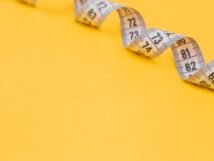Understanding body size and body mass index (BMI) is crucial for maintaining overall health and well-being. Body size plays a significant role in determining an individual's risk for various health conditions, such as heart disease, diabetes, and certain types of cancer. By understanding the factors that affect body size and how to measure it accurately, individuals can make informed decisions about their health and take steps towards achieving a healthy body size.
Key Takeaways
- BMI is a measure of body fat based on height and weight.
- Factors that affect a woman's body size include genetics, hormones, and lifestyle.
- Accurate measurements of body size include waist circumference, hip circumference, and body fat percentage.
- The average size of a 180 lb woman varies based on height and body composition.
- Body size can affect health risks such as heart disease, diabetes, and certain cancers.
Understanding Body Mass Index (BMI)
Body mass index (BMI) is a commonly used measurement to assess body size and determine whether an individual is underweight, normal weight, overweight, or obese. BMI is calculated by dividing a person's weight in kilograms by the square of their height in meters. The resulting number is then categorized into different ranges based on established standards.
Interpreting BMI results is important for understanding one's body size and associated health risks. A BMI below 18.5 is considered underweight, while a BMI between 18.5 and 24.9 is considered normal weight. A BMI between 25 and 29.9 indicates overweight, and a BMI of 30 or higher indicates obesity. It's important to note that while BMI is a useful tool for assessing body size on a population level, it may not be accurate for individuals with high muscle mass or certain medical conditions.
Factors that Affect a Woman’s Body Size
Several factors can influence a woman's body size, including genetics, lifestyle factors, and hormonal changes. Genetics play a significant role in determining an individual's body size and shape. Some people may have a genetic predisposition to carry more weight in certain areas of their body or have a naturally higher or lower metabolism.
Lifestyle factors such as diet, exercise, and stress can also impact body size. A balanced diet that includes nutrient-dense foods can help maintain a healthy body weight. Regular physical activity helps burn calories and build muscle, which can contribute to a healthy body size. Additionally, chronic stress can affect hormone levels and lead to weight gain or difficulty losing weight.
Hormonal changes, such as those that occur during puberty, pregnancy, and menopause, can also influence body size. These hormonal fluctuations can affect metabolism, fat distribution, and muscle mass, leading to changes in body size and shape.
How to Measure Body Size Accurately
There are several methods available to measure body size accurately. In addition to BMI, other commonly used measurements include waist circumference and body fat percentage.
Waist circumference is a simple measurement that can provide insight into an individual's risk for certain health conditions. Excess fat around the waist is associated with a higher risk of heart disease, diabetes, and other obesity-related conditions. To measure waist circumference, use a tape measure to measure the distance around the narrowest part of the waist, usually just above the belly button.
Body fat percentage is another useful measurement for assessing body size. It provides information about the proportion of fat mass versus lean mass in the body. There are various methods available to measure body fat percentage, including skinfold calipers, bioelectrical impedance analysis (BIA), and dual-energy X-ray absorptiometry (DXA). Each method has its pros and cons in terms of accuracy and accessibility.
The Average Size of a 180 lb Woman
Weight distribution plays a significant role in determining body size. Even at the same weight, individuals can have different body compositions and sizes. For example, a 180 lb woman may have more muscle mass and less body fat than another woman of the same weight who has less muscle mass and more body fat.
Weight distribution can vary based on factors such as genetics, lifestyle habits, and hormonal influences. Some individuals may naturally carry more weight in their hips and thighs (pear shape), while others may carry more weight in their midsection (apple shape). These variations in weight distribution can affect overall body size and health risks.
Body Size and Health Risks

Maintaining a healthy body size is crucial for overall health and well-being. Being underweight, overweight, or obese can increase the risk of various health conditions. For example, being underweight can lead to nutrient deficiencies, weakened immune function, and decreased bone density. On the other hand, being overweight or obese is associated with an increased risk of heart disease, type 2 diabetes, certain types of cancer, and other chronic conditions.
It's important to note that body size is just one factor in determining an individual's health risks. Other factors such as diet, physical activity level, genetics, and overall lifestyle habits also play a significant role. It's essential to focus on overall health rather than solely on body size.
How Weight Distribution Affects Body Size
Weight distribution can significantly impact body size and health risks. Individuals with an apple-shaped body tend to carry more weight around their midsection, which is associated with a higher risk of heart disease, diabetes, and other obesity-related conditions. On the other hand, individuals with a pear-shaped body carry more weight in their hips and thighs, which may be less detrimental to overall health.
Weight distribution is influenced by factors such as genetics and hormonal influences. While it may not be possible to change one's natural body shape, maintaining a healthy weight through a balanced diet and regular exercise can help minimize the associated health risks.
The Role of Genetics in Body Size
Genetics play a significant role in determining an individual's body size and shape. Certain genes can influence metabolism, fat distribution, muscle mass, and other factors that contribute to body size. Some individuals may have a genetic predisposition to carry more weight in certain areas of their body or have a naturally higher or lower metabolism.
Understanding the role of genetics in body size is crucial for setting realistic expectations and goals. It's important to remember that genetics is just one factor and that lifestyle habits, such as diet and exercise, also play a significant role in achieving and maintaining a healthy body size.
Strategies for Achieving a Healthy Body Size
Maintaining a healthy body size requires a combination of healthy eating habits, regular physical activity, and overall lifestyle changes. Here are some strategies for achieving a healthy body size:
1. Eat a balanced diet: Focus on consuming nutrient-dense foods such as fruits, vegetables, whole grains, lean proteins, and healthy fats. Avoid or limit processed foods, sugary beverages, and excessive amounts of added sugars and unhealthy fats.
2. Engage in regular physical activity: Aim for at least 150 minutes of moderate-intensity aerobic activity or 75 minutes of vigorous-intensity aerobic activity per week. Additionally, incorporate strength training exercises at least twice a week to build muscle mass and increase metabolism.
3. Manage stress: Chronic stress can lead to weight gain or difficulty losing weight. Find healthy ways to manage stress, such as practicing mindfulness techniques, engaging in hobbies, or seeking support from friends and family.
4. Seek professional help if needed: If you're struggling to achieve or maintain a healthy body size, consider seeking guidance from a registered dietitian or healthcare professional who can provide personalized recommendations and support.
The Importance of Body Positivity
In today's society, unrealistic beauty standards and body shaming can have detrimental effects on individuals' self-esteem and mental health. It's crucial to promote body positivity and embrace diverse body sizes and shapes.
Body positivity encourages individuals to love and accept their bodies as they are, regardless of societal standards or expectations. It emphasizes the importance of self-care, self-acceptance, and self-love. By embracing body positivity, individuals can focus on their overall health and well-being rather than striving for an unrealistic ideal.
Embracing Your Unique Body Size and Shape
Building body positivity and self-confidence is a journey that requires self-reflection and self-acceptance. Here are some tips for embracing your unique body size and shape:
1. Practice self-care: Take care of your body by nourishing it with nutritious foods, engaging in regular physical activity, getting enough sleep, and managing stress.
2. Surround yourself with positive influences: Surround yourself with people who support and uplift you. Avoid negative influences or environments that promote unrealistic beauty standards or body shaming.
3. Focus on your strengths: Instead of fixating on perceived flaws or imperfections, focus on your strengths and unique qualities. Celebrate what your body can do rather than how it looks.
4. Practice gratitude: Cultivate a sense of gratitude for your body and all that it allows you to do. Focus on the things you appreciate about your body rather than dwelling on perceived shortcomings.
Understanding body size and BMI is crucial for maintaining overall health and well-being. Factors such as genetics, lifestyle habits, and hormonal changes can influence a woman's body size. Accurately measuring body size through methods such as BMI, waist circumference, and body fat percentage can provide valuable information about health risks.
It's important to prioritize overall health and well-being over societal beauty standards. Embracing body positivity and loving your unique body size and shape is essential for mental health and self-confidence. By focusing on self-care, seeking professional help if needed, and surrounding yourself with positive influences, you can embrace your unique body size and prioritize your overall health.
If you're interested in martial arts and want to explore the diversity of different styles, you should check out this informative article on the USHRK blog: "From Karate to Kung Fu: Exploring the Diversity of Martial Arts." It delves into the various techniques, philosophies, and origins of different martial arts disciplines. Whether you're a beginner or an experienced practitioner, this article will provide valuable insights into the world of martial arts. Read more
FAQs
What is the average weight of a woman?
According to the Centers for Disease Control and Prevention (CDC), the average weight for women in the United States is around 170 pounds.
What is the ideal weight for a woman?
The ideal weight for a woman depends on various factors such as age, height, body type, and overall health. A healthy weight range for women is typically considered to be between 105 and 150 pounds.
What size clothing does a 180 lb woman wear?
The clothing size of a 180 lb woman can vary depending on her body shape and height. However, on average, a woman who weighs 180 pounds may wear a size 14 or 16 in clothing.
Is a 180 lb woman considered overweight?
A woman who weighs 180 pounds may be considered overweight or obese depending on her height and body composition. The BMI (Body Mass Index) is a commonly used tool to determine if someone is overweight or obese. A BMI of 25 or higher is considered overweight, while a BMI of 30 or higher is considered obese.
What are the health risks associated with being a 180 lb woman?
Being overweight or obese can increase the risk of various health problems such as heart disease, stroke, type 2 diabetes, high blood pressure, and certain types of cancer. It is important for individuals who are overweight or obese to maintain a healthy weight through a balanced diet and regular exercise.















